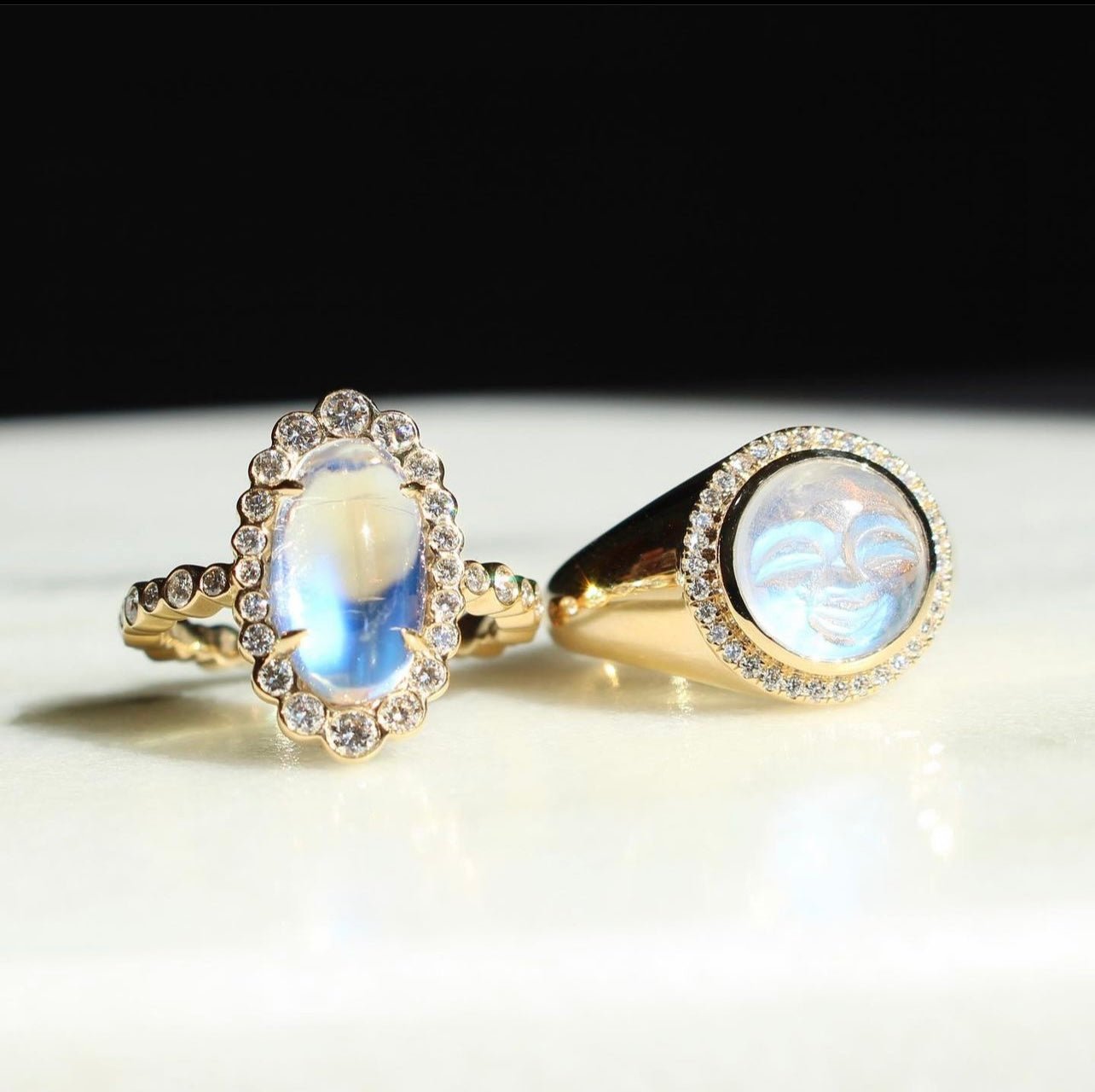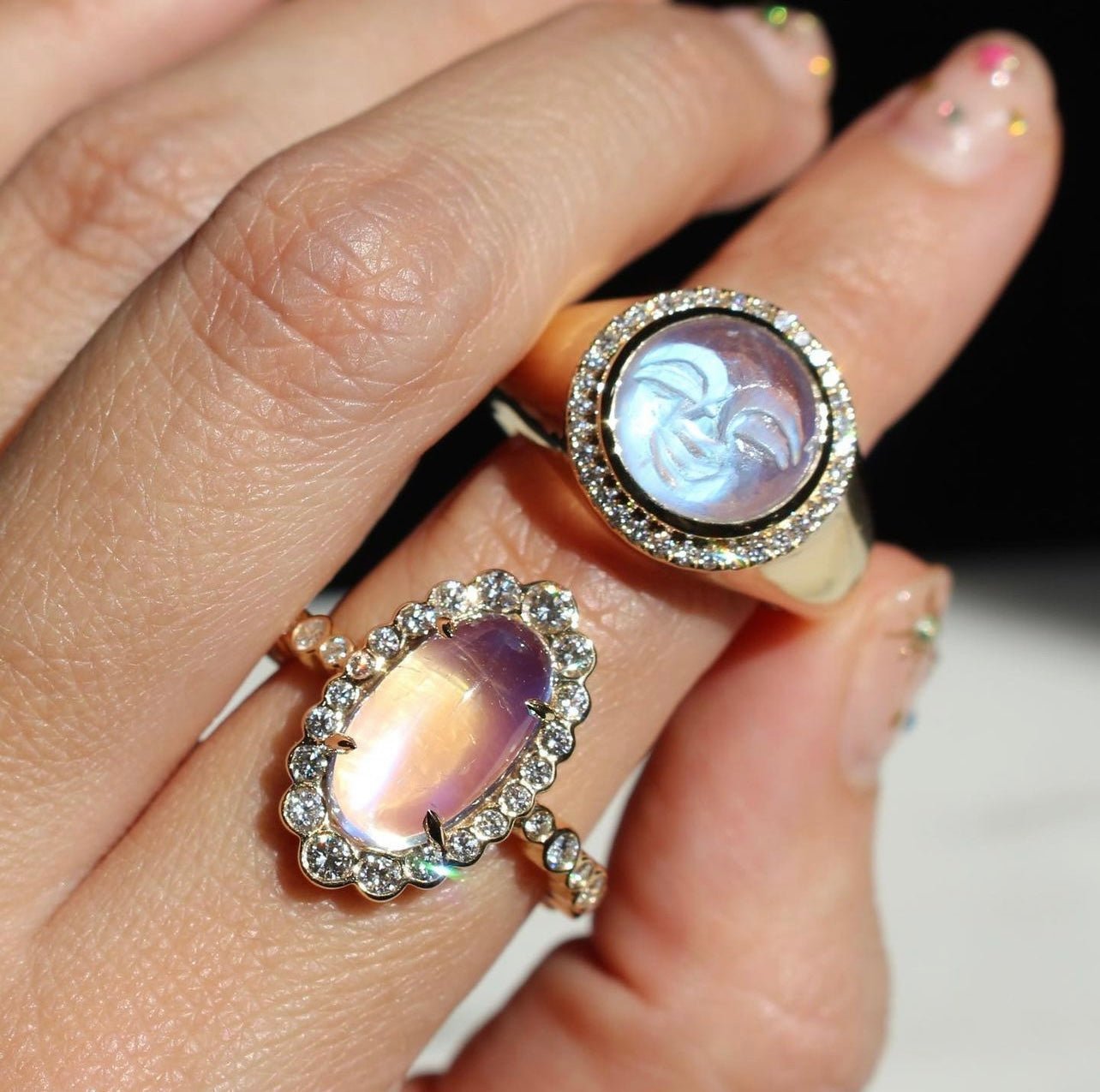Have you ever felt like a plain diamond ring or set of earrings was a little overdone? Your inkling isn’t uncommon, and you’re most certainly not wrong. Diamonds, although highly regarded as one, if not the, rarest stones available for jewelry design, tend to pop up everywhere. Whether it's a gift for a graduation present, an engagement surprise, or an April birthday, diamonds are seeming inescapable.
That is, until now.
Allow us to introduce you to a world of unique gems, innovative looks, and unconventional placements. At Mark Henry Jewelry, we value quality over quantity and understand the dissonance between diamonds’ supposed value and their immense commonality.
It begs the question: how is it possible to call a gem so easily accessible, scarce? We’d rather spend our time shining a light on truly hidden gems.
Enter alexandrite. This stunning, multifaceted gem hails from all the way across the world and has thankfully cropped up in various international hideouts after its initial supply was depleted.
Unlike diamonds, access to these precious stones - known for their color-changing properties - is very limited. If you’re seeking an alternative to the ordinary, look no further than alexandrite.
Backstories and the Basics
Alexandrite was discovered nearly two hundred years ago, in 1834, and quickly became a world treasure. Its origin was the Ural Mountains of Russia besides the Tokovaya River.
Nils Gustaf Nordenskiöld, a mineralogist, had been combing the region for valuable stones and believed that he had stumbled upon a type of emerald. This made logical sense since the Ural Mountains were originally emerald mines.
However, once the sun began to set, a brilliant red hue erupted out of the gem, turning into what resembled a ruby. The finding was a shock and a true testament to the magic and splendor of nature.
The gem was a hit, especially in the region, as it shared the same color scheme of Imperial Russia’s flag. Alexandrite ingrained itself in Russian lore permanently when it was formally named for the future leader Czar Alexander II for his coming-of-age.
While the nobles thoroughly enjoyed the gem, its popularity bled out into the general population, as their influence at the time could be linked to that of the modern-day British Royal Family.
Unfortunately, by the late 1800s, the majority of the Russian alexandrite supply had been exhausted.
Geographical Outreach
Stress over the lack of alexandrite available was quelled when the precious gem was discovered in Sri Lanka, Zimbabwe, Myanmar, and Madagascar after a successful excavation in Brazil in 1987.
However, multiple sources may be deceiving. In theory, the gem has many homes, but in practice, only Brazilian and Sri Lankan alexandrite meets the highest quality standards.
Properties
To fully encapsulate alexandrite’s gem profile, it's best to outline some of its most common properties.
Beyond being able to change colors as soon as daylight turns into an incandescent glow, this gem is defined by:
- Refractive Index: 1.745 to 1.750.
- Luster: Vitreous.
- Fracture: Ranges between a weak conchoidal to being uneven.
- Cleavage: Goes in one direction but ranges from obvious to poor.
- Heat sensitive.
- Luminescence: Weak red in Short Wave and Long Wave, present.
- Transparency: Opaque to completely see-through.
- Occurs in pegmatites, mica schist, dolomitic marbles, stream pebbles, grains, and gneiss.
The colors present in any given alexandrite piece vary depending on its geographic origin and can involve blue-green or light greens in daylight and mauve or purples in the nighttime. For example, Sri Lankan alexandrite is a ravishing olive green under the sun.
Other phenomena include chatoyancy, the cat-eye effect that is found rarely throughout alexandrite but sometimes in chrysoberyls, the familial variety that the gem belongs to.
Alexandrite is also known for its pleochroism, meaning that it changes tones based on which angle the light hits it and can be moved for this effect to be fully seen. Slightly reminiscent of the way that a diamond must be tilted around for its sparkle to pop, just with the addition of oranges, yellows, blues, and greens.
Divisive Durability
Alexandrite ranks as a strong 8.5 on the Mohs scale, which provides a decent layer of protection against major scratches, bumps, and cuts. The gem is often fitted into rings for this reason. Only those gems that fall above a 7 are equipped to ride out whatever potential damage can come from being knocked around and worn on a hand.
Yet, it should be noted that dust also falls as a 7 on the Mohs scale and can be quite the doozy in terms of scratches.
Diamonds, while a 10 and seemingly the hardest possible gem, are not immune to their own wear and tear. With that being said, diamond has proven to be 58 times more durable than any minerals that fall as 9s on the scale.
The difference between alexandrite and diamonds here comes down to personal preference and how likely you may be to damage your jewelry from daily activities.
Carat Confusion
It's a common misconception that the larger a gem or stone appears, the more valuable it is as compared to a smaller gem of a different variety. Consider this same idea with a pure piece of alexandrite that holds an incredibly high color-change percentage but is only one carat and a diamond that is double the size.
Which gem would be more expensive and rare? It is without question that the small, one-carat slice of alexandrite would win.
In terms of the highest quality, Brazilian alexandrite, most of the small supply is under 0.25ct. In general, the gems range from 0.09ct to 0.14ct, with some incredibly rare stones hitting the 0.75ct mark. However, it is difficult to vet larger pieces of alexandrite for the same quality control and ethical values that Mark Henry Jewelry abides by.
In Zimbabwe, for example, the alexandrite adorns a brilliant emerald green hue in sunlight that is appreciated by jewelers, yet a clean piece of this gem typically falls under a single carat.
Synthetic Similarities
Just like there are price-conscious, lab-created alternatives to diamonds, there are cheaper, synthetic counterparts to alexandrite. For diamonds, these imitations include the likes of cubic zirconia. For alexandrite, they are slightly more complicated.
In the 1960s, laboratories began to produce their own versions of the gem because its sources had been so vastly depleted. Through procedures that involved melting, hydrothermal methods, and flux, the synthetic alexandrite replicated the exact chemical and physical makeup of natural alexandrite.
This allowed it to be classified as “real,” something that lets sellers up their prices for a lesser-than gem when it is not actually raw. Buyer beware!
Other options that are naturally occurring but appear similarly to alexandrite are color-changing chrysoberyls. Synthetic corundum can duplicate the color-change of natural alexandrite but is still mass-produced.
It's best to shy away from treated or enhanced alexandrite, even if it helps make your piece look clearer or neater. It inherently devalues it. The same goes for diamonds, although it is much easier to find a fake diamond for an affordable price and continue to replace it if anything goes remiss. Even fake alexandrite can still be expensive since it so closely resembles the real thing.
Price Points
Both diamonds and alexandrites can be quite pricey, considering they are highly desired and naturally beautiful gems. However, alexandrite is slightly more competitive in terms of cost because it is genuinely so hard to find.
It is typical for an alexandrite gem to fall somewhere in the ballpark of a few thousand dollars, with a 1.99-carat emerald cut alexandrite documented as selling for $76,000.
Diamonds can be found for less than $100 if they have very poor clarity or color, but they can also rack up to be near $100,000. For diamonds, it is a combination of quality and size that determines value, not one property like alexandrite (color-change saturation and percentage).
A Unique Shine
With so many options, finding the best alternative to a classic and traditional diamond can feel daunting. This struggle is amplified when diamonds can feel like a safe and easy bet for a gift - they’re universally loved and difficult to go wrong in purchasing.
Yet, there is something to be said for standing out in a crowd and choosing to be bold: choosing to draw eyes on you and your style. Diamonds may be a girl’s best friend, but alexandrite rings are so versatile that it's truly for everybody.
It is our mission at Mark Henry Jewelry to educate our consumers on the exotic gems that are out there waiting for their use. We offer our alexandrite collection with all of the poise and natural brilliance it possesses in every cut imaginable - from geometric designs to triangular or kite facets.
Decades ago, we forged a strong relationship with our partner alexandrite mine in Brazil—which is entirely family. We’ve utilized their supply of this incredible gem with only the best and most ethical mining practices, making sure that the entire process from mineral to wardrobe is monitored.
With so many people choosing to conform, why not be different? Dare to explore this wondrous gem, with all of its history and accolades.
Sources:
Alexandrite vs Diamond - Is Alexandrite Worth More? | The Diamond Authority
Alexandrite Value, Price, and Jewelry Information | Gem Society


